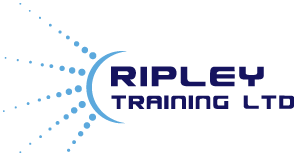Businesses around the world are providing their employees with in-house training courses as there are many benefits for both the business and the employees.
When a business invests in training, the training provider should work closely with their client, in this case, the business and understand their exact needs. This is to ensure that the client and the employees receive the best possible training, which in turn will be very effective.
Additionally, there should be an option provided by the trainer that enables the business to receive follow-up training and coaching sessions, which will identify if there is any additional training required.
Why choose In-house Training?
In-house training provides businesses with the opportunity to enable employees to receive training sessions that are more focused for individual needs. These are the additional benefits:
- Businesses can save employees time and in turn, money, as employees will not be required to travel to a training centre for the duration of the course.
- Real life examples included, in order, to help employees apply their learned skills to real life situations more effectively.
- Interactive training with team members can be used which is much more enjoyable and engaging for those attending.
- In-house training courses provide businesses with flexibility that suits e.g. avoiding peak operation times of the business.
- There are a wide variety of courses that can be tailored to meet individual business needs.
In-house courses can also provide in a one to one/two coaching approach for employees or if required, small to large groups of employees. This of course depends on individual business needs. Businesses are likely to get a discount if the course is charged per person and delivered in the business compared to scheduled courses. However, there are some training course providers that charge by the course, despite the number of employees taking part in the training session(s) to keep the costs manageable for clients with limited budgets. This also helps if the organiser has to gain approval first and they know if the numbers increase slightly they will not have to gain approval again for an increase cost.
If you’re a business looking for value for money from training sessions; it’s not always the cheapest training course that will be the biggest benefit for the short and in particular long-term goals of the company.
Courses can vary depending on the knowledge, skills and level of training required, from basic skills to management training courses. They differ through level of learning complexity and the time in which the training will take.
Choose the option that suits you:
Choose a Training Programme
Be sure to choose a business training course that is relevant for your business and employees needs. Remember that ‘value for money’ does not necessarily mean to receive the cheapest training package. Better still; ask around to see if you can get any advice on which training providers provide a good training programme. If you are still unsure, take a look online at reviews that others may have left on their profile.
Tailoring the Training Course
Good trainers should spend more time on finding out what is the most appropriate way to get the best for their client due to the nature of the course. This way, the needs of the client can be understood at a much more in-depth level, which in turn leads to a greater chance of success.
One on One / Two Coaching
If you as a business would prefer or feel that you would benefit more from receiving training on a one-to-one basis, then there are some excellent training courses available specifically for this reason.
One to one coaching sessions can too be tailored to individual needs; a mixture of training courses can be adapted and also preferred learning styles should be adapted to. People learn more effectively in different ways; in other words, some people may learn more if they listen and take notes, whereas some people will learn more if training sessions include a more hands-on practical approach.
No matter what the training course you choose, there should be training materials to support the training session(s).
Author: Mike Smith

